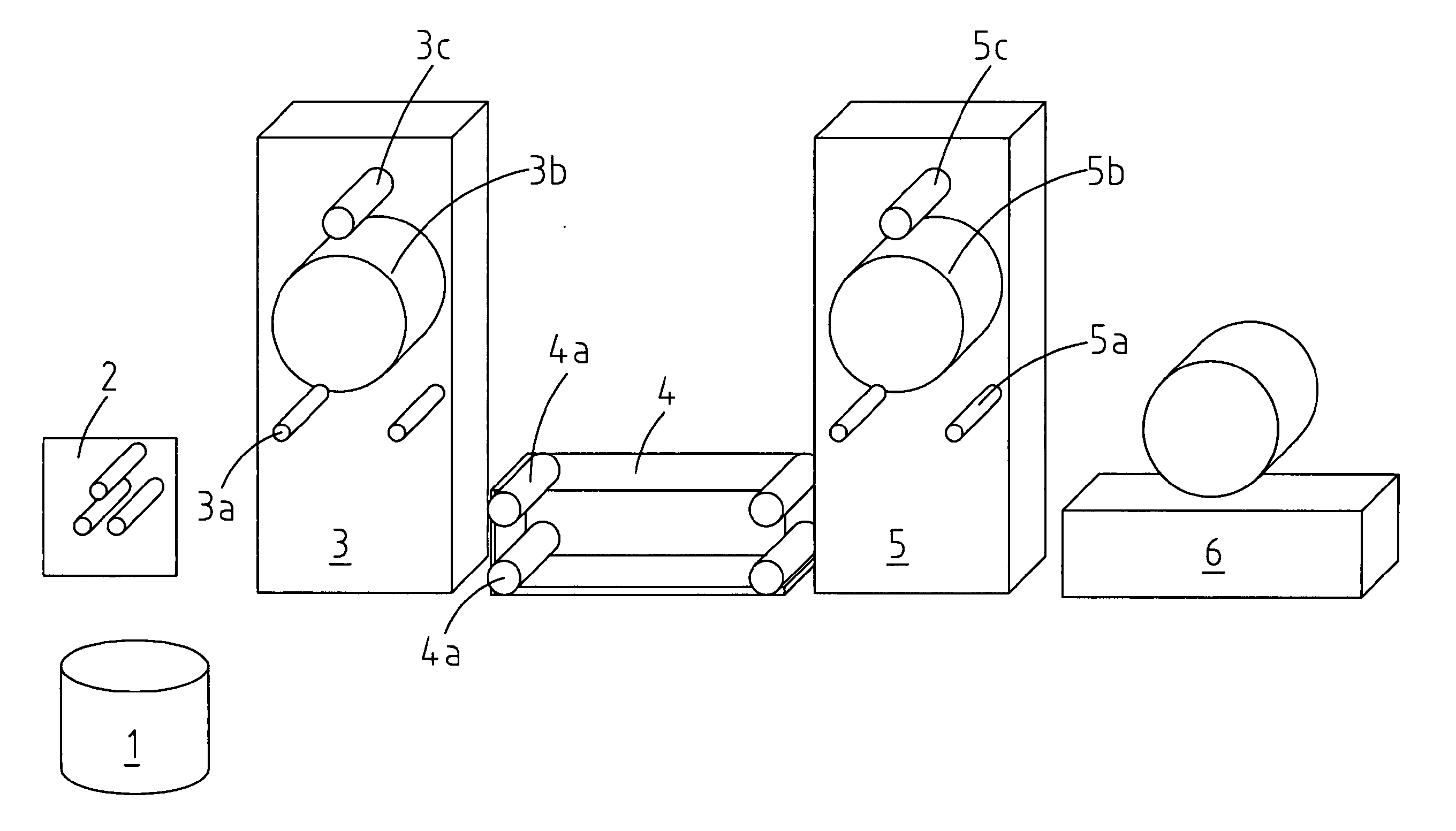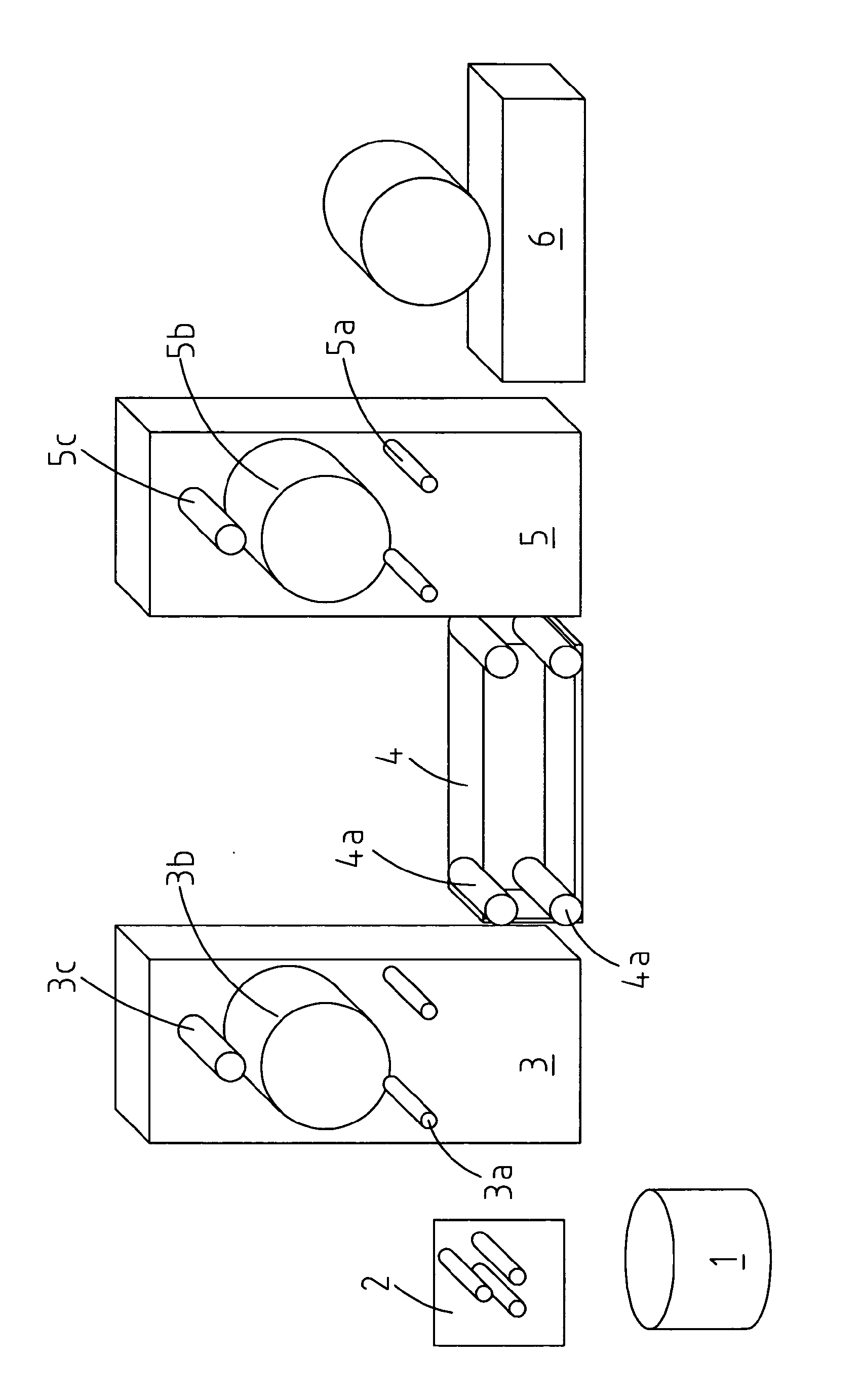Optochemical sensor active element, method of its preparation and use
- Summary
- Abstract
- Description
- Claims
- Application Information
AI Technical Summary
Benefits of technology
Problems solved by technology
Method used
Image
Examples
example 1
Impregnation of solvent-crazed polymers with O2-sensitive dyes and fabrication of O2 sensors
[0065]Using hand-operating clamps, strips of HDPE film with gage dimensions of 50×20 mm and thickness of 60 microns were stretched in hexane along the direction of melt-extrusion by a tensile strain of 175%, and allowed to dry under a stream of air while remaining stretched. A solution of PtOEPK dye in hexane (1.0 mg / ml) was applied dropwise on the surface of hexane-crazed HDPE matrix with a pipette and allowed to dry under fixed dimensions in air for 10 min. The resulting polymers stained with the dye (thickness of ˜40 microns) produced the phosphorescent material which can be used for sensing of O2.
[0066]Using hand-operating clamps, strips of HDPE with gage dimensions of 15×100 mm and thickness of 25 microns were stretched in hexane along the direction of melt-extrusion by a tensile strain of 120% and allowed to dry under a stream of air. This solvent-crazed HDPE matrix was submerged in a ...
example 2
Preparation of O2 sensors in a continuous process
[0071]A computer-controlled set-up was constructed which serves to orient polymer films and fibers in a precise and controlled way and to provide continuous stretching and solvent crazing of polymer tape. It involved feed rolls, a guide roll, a solvent bath, take-off rolls, and a winder. A general sketch is shown in FIG. 1 in which 1 is the roll of the initial polymer film (may be a non-oriented or slightly oriented film, 2 indicates the film guiding rolls, 3 indicates the film feeding module with two guiding rolls 3a, a feeding roll rotating at a pre-set speed 3b, and a film aligning roll 3c, 4 indicates a crazing bath with active solvent and a set of four guiding rolls 4a, 5 indicates a receiver module with two guiding rolls 5a, a receiving roll rotating at pre-set speed 5b, and a guiding roll for folding the polymer tape 5c, and 6 indicates a module for winding the processed film into rolls. Polymer film 1 having width 10-50 mm, th...
example 3
Properties of O2 sensors based on solvent-crazed polymers
[0079]O2 sensors based solvent-crazed HDPE and PP polymers, produced according to the procedures described in Examples 1,2, were investigated for their photophysical and sensing properties. For all the polymers, relatively high degree of impregnation with the dyes was achieved. Thus, the PtOEPK-HDPE sensors produced from a 25 micron thick tape according to Example 2 showed absorbance values typically ranging between 0.02-0.2 at 586 nm (absorption maximum for PtOEPK), after their heat-treatment and sealing of the nanopores. Phosphorescent signals were comparable to those of traditional sensors.
[0080]Phosphorescence signals obtained from the sensors were high enough to measure O2 in the gaseous and aquesous samples by phase-fluorometry. Measurements performed with a bench-top phase-fluorometric detector described in (Papkovsky D B et al[0081]Analytical Letters, 2000, v.33(9), 1755-1777) produced the following calibrations for th...
PUM
| Property | Measurement | Unit |
|---|---|---|
| Pore size | aaaaa | aaaaa |
| Thickness | aaaaa | aaaaa |
| Fraction | aaaaa | aaaaa |
Abstract
Description
Claims
Application Information
 Login to View More
Login to View More - R&D
- Intellectual Property
- Life Sciences
- Materials
- Tech Scout
- Unparalleled Data Quality
- Higher Quality Content
- 60% Fewer Hallucinations
Browse by: Latest US Patents, China's latest patents, Technical Efficacy Thesaurus, Application Domain, Technology Topic, Popular Technical Reports.
© 2025 PatSnap. All rights reserved.Legal|Privacy policy|Modern Slavery Act Transparency Statement|Sitemap|About US| Contact US: help@patsnap.com



